This Homemade Mango Wine recipe makes good use of canned mango puree, turning it into a fabulous, fruity wine. Start now, enjoy it in a year!
Originally Posted January 3, 2011. Updated 12/6/2020
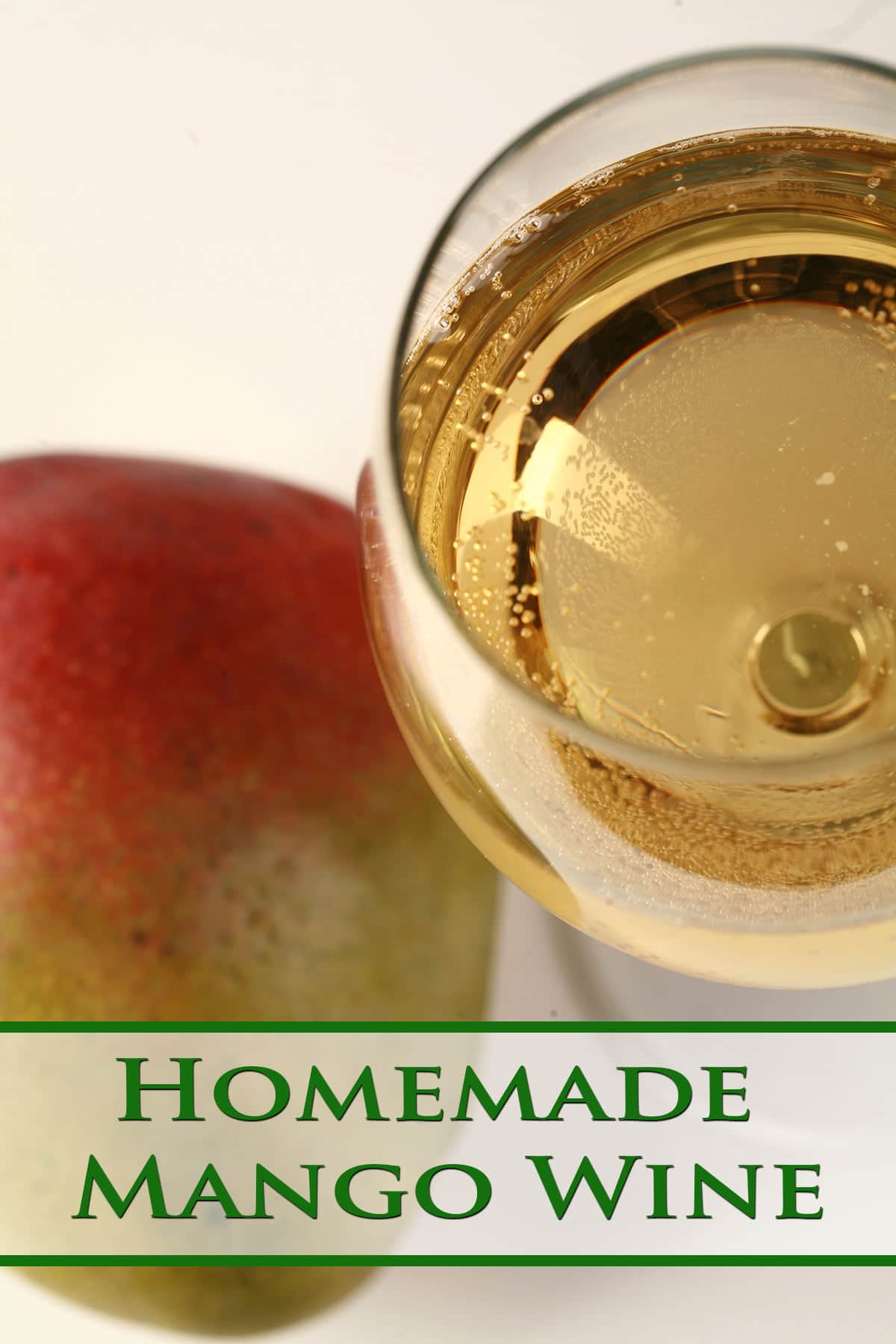
It didn’t take long before we figured things out on our own, and started coming up with our very own recipes.
This wine is not only one of the very first recipes we created, it’s one of our absolute favorite wines to drink, and also one of the cheapest/easiest to make. In other words, a damn fine foot to start out on!
This wine starts out very orange, thick, and pulpy. It won’t look anything like wine for a few months, as the pulp and yeast slowly settle.
Another nice thing about this wine is that it is very good when “young”.
Unlike many recipes, this one is tasty and ready to drink in only about 4-5 months! Age it if you like - we haven’t been able to keep any long enough to see how it ages!
The ABV on this comes out to about 15-16%.

How to Make Mango Wine
If you haven't attempted making wine before, don't be intimidated! Check out our primer to home brewing:
- Wine Making At Home, Part 1: Why?
- Wine Making at Home, Part 2: Equipment to Get Started
- Wine Making at Home, Part 3: The Brewing Process.
- Wine Making at Home, Part 4: How to Stabilize and Back Sweeten Wine
Just a small handful of entries, and you'll be good to go!

Mango Pulp Wine Ingredients
This wine recipe requires only a few ingredients to make - super simple! Here is some information about those base ingredients that you may find helpful.
Mango Pulp
Due to the seasonality and variable quality / availability of mangoes when we wrote this recipe, we designed the recipe to use canned mango pulp, rather than ripe mangos.
We use canned sweetened mango pulp as the basis for both this wine, and for our Homemade Mango Strawberry Wine Recipe. Some thoughts on that:
Flavour
Canned mango pulp is super flavourful, and really just delightful. Fresh mangoes are also super flavourful - though more work, more on that in a minute - but frozen mangoes were another option we’d considered.
Frozen mangoes don’t necessarily seem to be made from mangoes at peak ripeness, and I find their flavour and sweetness to be lacking.
Consistency
Mangos can vary wildly in size, flavour, sugar content, ripeness, and more... but buying a can of mango pulp takes all those variables out of the equation.
One can of mango pulp is fairly indistinguishable from the next can of the same brand, and that’s handy when it comes to making future batches of a wine you like.
While your fermentation may vary the final ABV, etc... the general flavour and outcome should be pretty similar between batches.
Convenience
Opening a can of mango pulp and dumping it into the mix is a whole lot easier than peeling, pitting, and chopping ripe mangos.
... not to mention the hassle of looking for the perfectly ripe mangos, before even getting to that point! We like to keep a few cans of pulp on hand for whenever a mango craving hits - it’s great for making things like Mango Lassi Popsicles or Mango Mojito Ice Cream, after all!
Price
A can of mango pulp usually costs around $3.. While the mangos that would be needed to make the same amount of pulp would cost several times that amount.
When you add in the labour savings AND the bonus of consistency... canned mango is a no-brainer, IMHO.
When we first created this recipe, we were still living in the USA. At the time, Swad Kesar Sweetened Mango Pulp was our default, as it was readily available in our local grocer’s international foods aisle for about $3/ can. It’s also available at Indian grocery shops and online.
Now that we’ve moved, the brand that we see more often locally - Quality Alphono Mango Pulp - is the one we tend to default to. Both taste great and work well, so go with what you have access to!
There are probably other brands out there - if it’s in the 800-850 g range and is sweetened, you’re good to go.

Sugar
While sugar is technically optional when making wine, NOT adding any sugar will result in an INCREDIBLY dry wine.
When you’re making wine from mango - much like with any other light coloured, non-grape fruit - you’ll want it to have at least some residual sweetness to it, or it just won’t taste like much. The sugar helps to bring out the mango flavour!
Sugar is an important part of wine making, and there are a few aspects of sugar to keep in mind:
Type of Sugar
In terms of type of sugar, we prefer to use plain white granulated sugar for this wine. I find that any of the brown sugars overwhelm the flavour of the mango pulp.
How to Make Mango Mead
If you’d like to make a mead rather than a wine, you can swap the sugar out for honey. We’ll usually use 4-5 lbs of honey for this.
A couple notes:
- I say “Mango Mead”, as that’s what most people would understand... but mead with fruit is technically called “melomel”.
So, swapping sugar out in favour of honey would give you a mango melomel. The more you know!
- When you’re using honey instead of sugar, you’re going to want to be careful in your choice of honey. Where white sugar is fairly neutral in flavour, honey can be aggressively flavoured.
I recommend picking something lightly coloured and lightly flavoured - a clover or orange blossom honey, for instance.
Something like a wildflower or buckwheat honey is likely to completely overwhelm the flavour from the mango pulp.
Alcohol Content
Aside from flavour, there’s the matter of alcohol content.
Your wine’s final ABV will vary wildly dependent on a few things: The initial sugar content of the mango pulp you use, how much sugar you add, and what kind of yeast you use (more on that in a bit)
Any amount of sugar will result in a higher alcohol content than making the same wine without sugar added. Sugar - both in the base wine itself, and from the added sugars - is what feeds the yeast, the yeast eats up the sugars and gives off alcohol as the byproduct of that process.
More sugar = more food = more alcohol... to a point, anyway. About that...
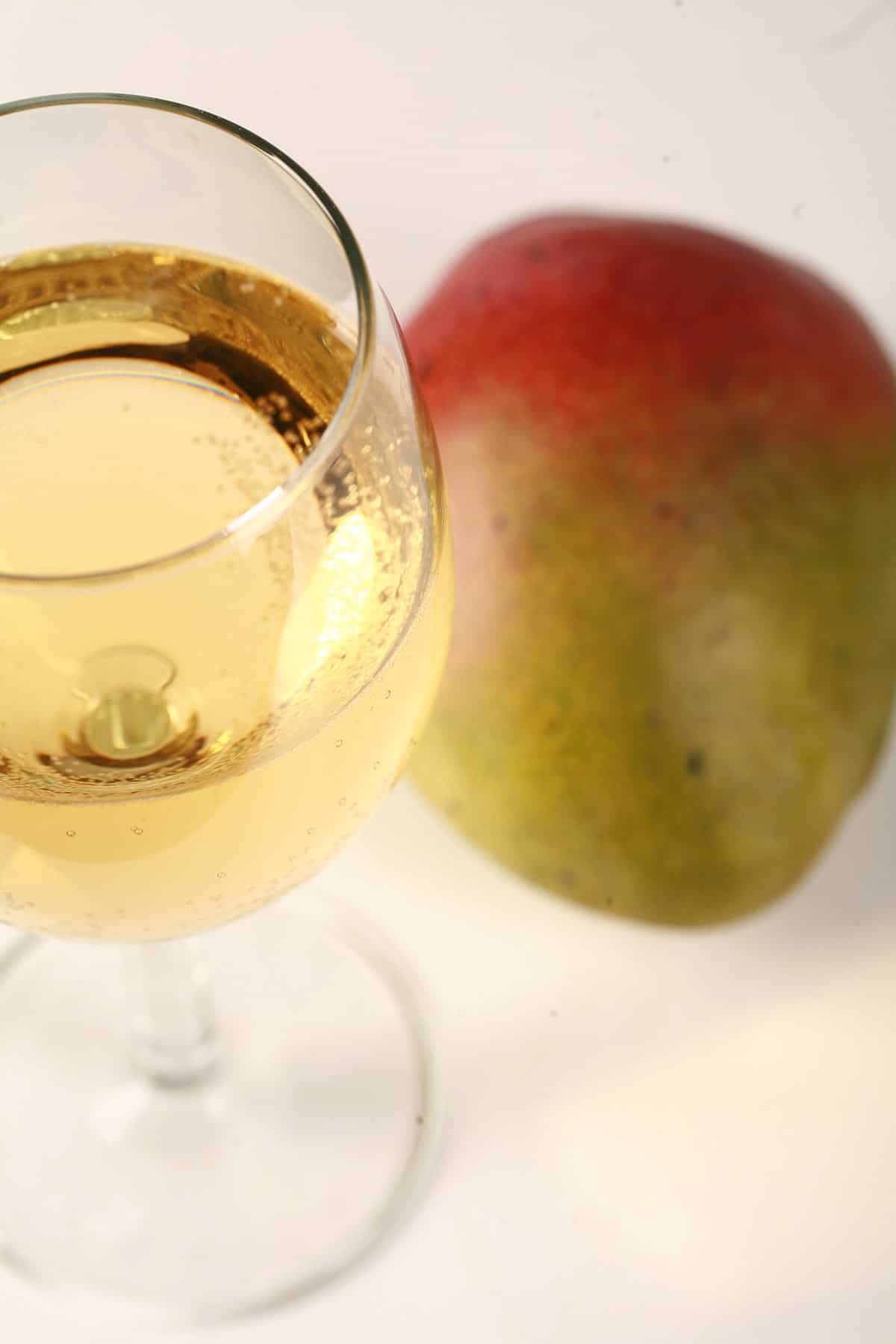
Yeast
The type of yeast you use will impact the alcohol content of the final product.
Yeast organisms don’t have an *unlimited* capacity to process sugar into alcohol. At some point, the environment they’re living in - the brewing wine - becomes too high in alcohol for the yeast to survive. They die off, the fermentation stops.
Different types of yeast have different tolerances for alcohol in the environment. That is, some yeast will be able to survive higher amounts of alcohol in the wine, so they’ll continue producing it longer than some other types.
Some types of yeast will bring you to something like an 8% ABV, while others will let things run wild until close to 20% ABV.
It’s good to know what you have in mind, when you choose your yeast.

If you want a sweet wine with a low-ish ABV - without having to back sweeten it (more on that in a bit) - choose a yeast with a lower tolerance for alcohol.
If you’re looking for a dry wine with a low ABV, choose a yeast with a lower tolerance for alcohol, and don’t use a ton of sugar.
If you want a sweet wine with a high ABV, use a bunch of sugar with a high-tolerance yeast... and be prepared to backsweeten it.
If you want a dry wine with a high ABV, use a fair amount of sugar and a high tolerance yeast.
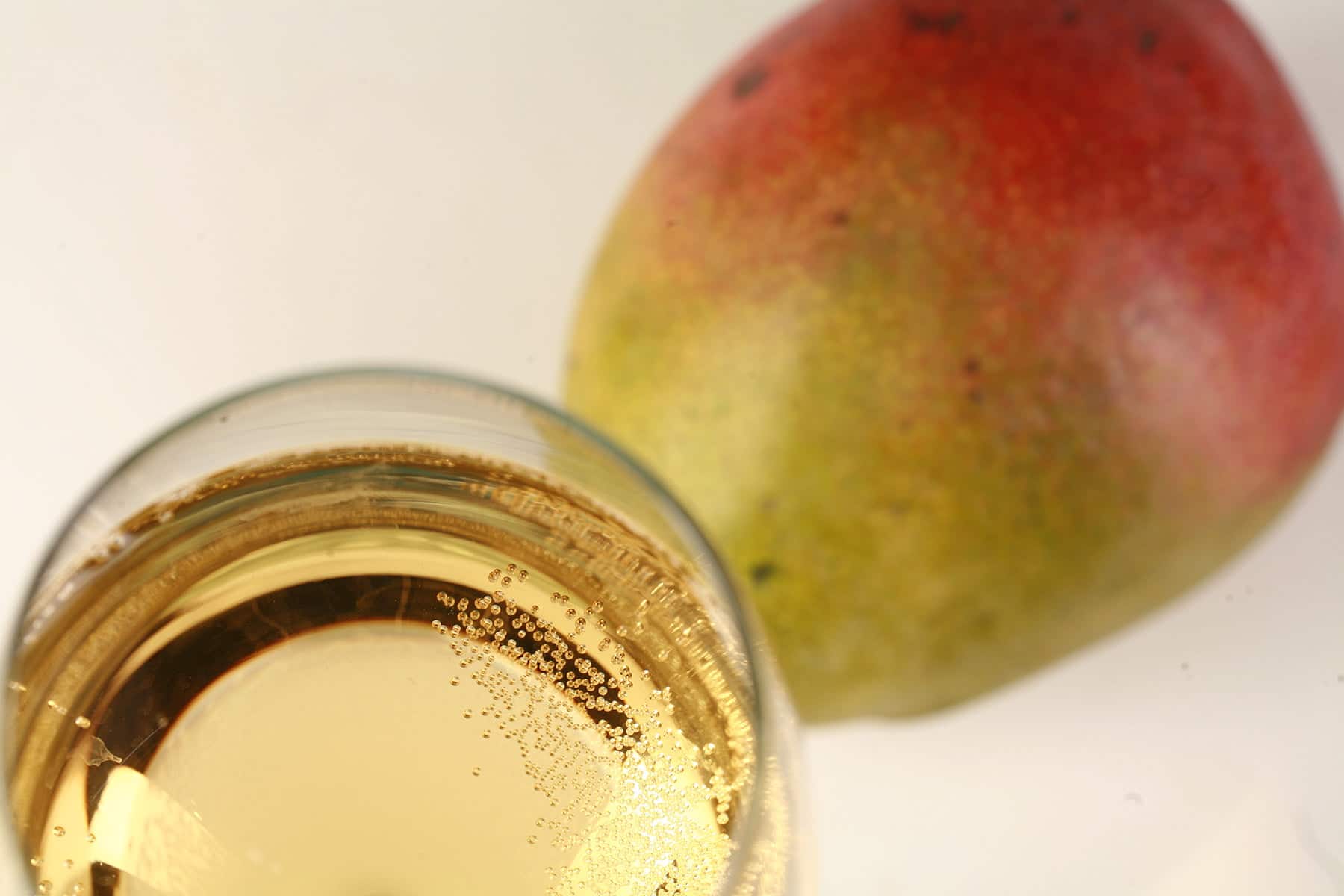
Making Larger Batches of Wine
As a note, you can easily scale this wine recipe up - in fact, there's a function inside the recipe card itself to do the math for you!
One note, though: You don't need to multiply the yeast, but the software doesn't know that. We will use one pouch of yeast for anything from 1-5x batches, and then 1 pouch for every 5x batches beyond that.
As a related note: The recipe software is definitely geared towards cooking, not wine making. Therefore, you can pretty much ignore all of the info it gives you: The nutritional info is calculated on everything that goes into the wine.
It does not take into account how much sugar will be fermented out, how much volume is lost to racking, the fact that the fruit pulp is removed before the final product, etc.
Back Sweetening Your Homemade Mango Wine
Sometimes - usually, even - you’ll find that the yeast went a bit too far with their smorgasbord, and you end up with a wine that’s not as sweet as you’d like it.
... and that’s when you back sweeten it! You can read my How to Stabilize and Back Sweeten Wine post for information on how to back sweeten it.

How to Make Sparkling Mango Pulp Wine
As I’d mentioned earlier, mango pulp wine is especially nice as a bubbly beverage. There are two main ways to accomplish this, both of which happen AFTER fermentation has ceased.
Note: Consult your local homebrew store for what your options are when it comes to bottling sparkling wine. As this ferments a bit in the bottle, normal wine bottles aren’t a good idea - they can explode from the extra pressure.
We’ll usually use beer bottle and caps for any sparkling wine or sparkling ciders that we make, but there are options more along the lines of champagne bottles. Selection and brands tend to vary wildly by location.
Anyway!

For Naturally Carbonated Sparkling Wine
In a small pot, mix together 1 cup of water with 1 cup of granulated sugar. Use a sanitized funnel to pour this into a sanitized large carboy.
Rack the wine over into this carboy, swirling it as you go.
Bottle the wine into appropriate bottles, following directions for whatever kind of cap/closure you will be using.
Allow wine to age at least a month or two – residual yeast will ferment the added sugar, carbonating the wine. Serve chilled.
For Force-Carbonated Sparkling Wine
Alternatively, you can rack the wine (without the added sugar syrup!) into a keg and force carbonate it, if you have the set up for that - That’s what we tend to do with our ciders.

More Home Brewing Recipes!
While you've got your current homebrew fermenting away, why not consider putting a batch of something else on, to occupy your wait time? Here are a few of my other wine, cider, and mead recipes:
Wine Recipes
Banana Wine Recipe
Blackberry Wine Recipe
Blackcurrant Wine Recipe
Blueberry Wine Recipe
Cherry Wine Recipe
Cranberry Clementine Christmas Wine Recipe
Cranberry Wine Recipe
Faux Lingonberry Wine
Lychee Wine Recipe
Mango Strawberry Wine Recipe
Mint Wine Recipe
Lychee Wine Recipe
Partridgeberry Wine Recipe
Passionfruit Wine Recipe
Peach Wine Recipe
Stone Fruit Wine Recipe
Strawberry Wine Recipe
Ube Wine Recipe
Watermelon Wine Recipe
Mead Recipes
Black Cherry Mead Recipe
Blueberry-Clementine Mead Recipe
Blueberry Mead Recipe
Clementine Mead Recipe
Pumpkin Mead Recipe
Wildflower Mead Recipe
Cider & Miscellaneous Homebrew Recipes
Hard Apple Cider Recipe
Home Brew Hard Iced Tea Recipe
Maple Hard Apple Cider Recipe

Share the Love!
Before you drink up, be sure to take some pics of your handiwork! If you post it to Bluesky, be sure to tag us - @CelebrationGen. We're also on Pinterest, so you can save all your favourite recipes to a board!
Also, be sure to subscribe to my free monthly email newsletter, so you never miss out on any of my nonsense.
Well, the published nonsense, anyway!
Now, on to that recipe!
Homemade Mango Wine
Equipment
- Large pot
- 2 gallon fermenter bucket and lid
- 1 - 2 1 gallon glass carboys
- 1 air lock and stopper
- Siphon, siphon tubing.
Ingredients
- 8 cups water
- 30 oz can of Mango Pulp*
- 6 cups Granulated Sugar
- 1.5 teaspoon acid blend
- ½ teaspoon pectinase pectic enzyme
- 1 teaspoon yeast nutrient
- ¼ teaspoon wine tannin
- 1 packet Red Star “Champagne” yeast
Instructions
- Combine water, mango pulp, and sugar in a large clean, sanitized pot. Cook over medium heat, stirring frequently, until sugar dissolves and mixture comes to a simmer. Remove from heat.
- Stir in acid blend, pectic enzyme, yeast nutrient, and wine tannin. Cover pot with sanitized lid, allow to cool to room temperature.
- Using sanitized equipment, take a gravity reading. It should be in around the 1.122 area. Keep track of the number!
- Using a sanitized funnel, transfer cooled mixture to a sanitized 1 gallon carboy. Sprinkle yeast into carboy, cover with sanitized air lock. Let sit, undisturbed, overnight.
- Within 24 hours, you should notice fermentation activity – bubbles in the airlock, carbonation and /or swirling in the wine must. This means you’re good to go! Put the carboy somewhere cool (not cold!), and leave it alone for 2-3 weeks.
- After 2-3 weeks, you should notice that the wine has clarified a fair amount, with a thick layer of sediment in the bottom of the carboy. Using sanitized equipment, rack the clarified wine off the sediment, into a clean, freshly sanitized 1gallon carboy. Cap with sanitized airlock, leave it alone for 2-3 months.
- Repeat racking process. Leave wine alone for a month or so.
- Using sanitized equipment, rack the wine into clean, sanitized bottles. Cork.
- Enjoy.. and start planning for a larger batch!


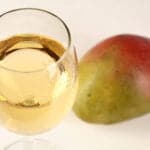



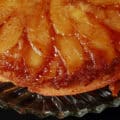
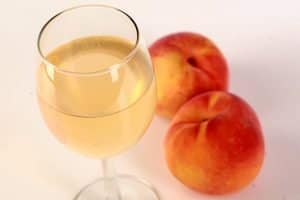


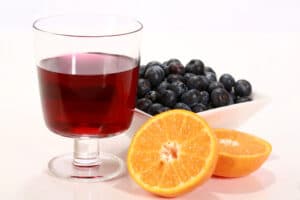
Luis
Thank you for posting the recipe. I started some mango wine yesterday following your recipe and am looking forward to the taste. It is fermenting effervescently! 🙂
Thanks,
Luis
jim Peterson
Good morning, Guys...I've been kicking around the idea of making wine for the last 6 or 7 years, and could not imagine myself waiting for a year for something to be ready to use; I don't even buy green bananas.
So...I have seen the light, and am ready to make some wine. But first, I have about 100 questions...
I spend from 4 to 6 months, or the winter in my home in Mexico, where I have 80 or so banana trees, and several mango trees, also I have some passion fruit. I would like to make wine from all or one of the mentioned.
My first problem, is I have to leave and go back to Nevada when the weather turns hot in Mexico; 100 degrees, with close to 90/95 humity...Question #1..at what point in the brewing can I let the brewing rest in these conditions for 4 or 5 months, until I return?
I will appreciate any help, and I really appreciate this great website. You guys have made learning fun and interesting.
jim
Gardnerville Nevada/Bacubirito Mexico
Cameron
What would I have to do differently to do this recipe with actual mangos?
Marie Porter
Puree fresh, very ripe mangoes to match the amounts in the recipe, add some extra sugar.
Joan
How much does this recipe make? What size carboy did you use?
Marie Porter
It ends up making about a gallon of finished wine (maybe slightly less). As is, we start it off in a 1 gallon and a .5 gallon, and rack it into a 1 after the pulp settles.
Diahann Forstbauer
I'm starting the wine today. The 8 cups of water didn't fill my gallon jug. Should I be adding more water. Thank you
Marie Porter
You can if you like, but don't have to.
Marie Porter
Received an email question from a read, figured I should answer it here as well:
> Hi Marie,
> Thank you your wonderful mango wine recipe.
> I would like to make a 5 gallon batch.
>
> What will be the list of ingredients for a batch this size? I also would
> like to use Honey instead of sugar.
> Any advice from you will be appreciated.
>
> Thank you again
I would suggest this:
2.5 gallons water
5x 30 oz can of Mango Pulp*
10 lbs honey
6 tsp acid blend
2.5 tsp pectinase (pectic enzyme)
5 tsp yeast nutrient
1 tsp wine tannin
2 packet Red Star “Champagne” yeast
Hope this helps!
Miesha Brown
Hello, I want to make 6 gals with organic mango nectar instead of fresh mangoes, or canned juice, is this possible with your recipe, or do you have another one similar to what in trying to accomplish, also, do you have to boil or cook in the beginning process, or can you just add all of the ingredients and mix?
Marie Porter
It's possible IF there aren't any preservatives in the nectar. Most commercially available juices or juice type products have preservatives that will prevent fermentation from happening.
If you do have it, you don't necessarily need to boil, but I would recommend heating it up until the sugar dissolves, for a more accurate hydrometer reading.
Rebecca
We have just started making wine this year and have completed pineapple and blueberry wine. When I saw this recipe I just had to give it a try. I love everything mango and since we have a nearby farmers market which I found 6 cans for 10.00, how could I go wrong! We started last weekend and I stopped fermentation short because I have found we loose flavor the longer fruit ferments. Besides I enjoy lighter sweet wine. We did a three can batch and just racked it for the first time. I could not help to taste it. Ohh my it may not last 3 months on the shelf. It is sweet and very mango! Thanks for sharing your recipe.
Marie Porter
Right?!
We've had a few wines like that, where even before adding the yeast, we just want to drink it. Canned mango is amazing stuff!
Travis
My neighbor has a bunch of fresh mangos we just picked and we're going to try this recipe, I'll let you know how it turns out!
Veronica Anne
Hi,
I'm from Sydney Australia. And have 4 mango trees in my yard.
I made 3 batches of your marvelous mango wine - and oh weren't they absolutely delicious!
I have just 2 bottles left that will be going to visit my sister and my mum in Canada in October when mum turns 90! These first bottles racked, are so crystal clear that they resemble colored water!
Beautiful!
The rest of the mangoes that ripened up so fast that were too bad to give away to neighbors, so I cut them up and froze them in flat bags in the freezer and will make them up later......
Thank you for such a simple, easy recipe!
stella
Hi Veronica (and Marie)! I'm currently on a farm in India with a surplus of mangoes and am looking to experiment with this wine. Veronica, I'd love to hear your experiences with it- mostly I'm wondering how much sugar you added to your fresh mangoes and how it came out. I did a test batch and I came out quite sour, but I think that I mixed up recipes and used like half the amount of sugar I should have. Would this be a reason it tastes sour? I like it, but it's more like kombucha with a kick.
Any thoughts you have are so appreciated- thanks so much and I hope you're both well!
Marie Porter
I haven't made this with fresh mangoes, so it's hard to say. It'll depend on how sweet your mangoes are, and how alcoholic you want the finished wine to be.
I definitely recommend back sweetening it, or it's not likely to taste very mango-y.
Andre Jones
Hello Marie,
I started a 5 gallon batch a little over two weeks ago. It is u rent lust I'll fermenting is that normal? I also started with s.g. 1.124 pretty high possible alcohol content 16%. Should it still be fermenting? This is my first time making any wine. I used 17lbs of fruit. 10lbs of fresh Haitian mangoes. 4 lbs of fresh pineapple. 3lbs of Anjou pears. 15lbs of organic granulated sugar. Pectin, acid blend and tanin. A little consul would help please.
Andre Jones
Correction: it is still fermenting is that normal?
Marie Porter
Yep! Sometimes it will ferment for months... and then restart fermentation when you rack it over.
Christine Hamilton
Hi Marie! I am going to make some mango wine, but a 5 gallon batch, I read in an earlier comment that the recipe said 10kg of honey, I am wanting to use sugar, are you able to give me the amount of sugar I should use instead of honey? Also I have frozen mango, is it ok to use an equivalent weight to the canned mango puree?
Marie Porter
Hi Christine,
Canned mango already has some sugar added to it, so it's not really easy to substitute fresh/frozen mango for mango puree. You can use it, but you'll need to add extra sugar. I haven't made up a recipe for frozen mango, so I'm not sure what the fruit/sugar amounts needed would be.
I'm not sure what you mean about honey? The recipe is written for sugar as it is!
Bill mcLaughlin
Hello, where do l buy the yeast and all the Additives? Thanks so much for your recrepe. I have a loaded mango tree waiting to be brewed. Thanks again.
Marie Porter
Any homebrew supply store
Cindy Longhini
Hi there! I am going to try this recipe, but first I have a question. I would like to try a small batch at first just to test, and would then want to try a larger (5 gal) batch. I would like to buy a 6 gal. carboy but is it ok to do small batches in a large carboy? Also, I would want a carboy with a spigot but are there problems with extracting from a spigot? Your advise is very much appreciated!
Marie Porter
Making a small batch in a larger carboy increases the risk of spoilage - so personally, I wouldn't recommend it.
As for extracting from a spigot, those are usually at the bottom, where all the sediment is. I would think it would be difficult to get a clear wine, using a spigot.
David L
Do you need to put a Campden tablet in, or will it hurt if you did?
Marie Porter
YOu don't need to, as the heat kills anything you don't want in there. Can't see how it would hurt anything, it's just a waste.
David L
Thanks, I'm new so probably overly worried about bacteria and trying to prevent it.
David L
How much is this supposed to yield? I followed the recipe, but it was much less than 1 gallon in the fementing bucket. I topped it off with water.
Also 0 is the canned Mango supposed to be sweetened? The stuff I found was pre-sweetned. Still added the 6 cups of sugar and come out with a 1.135. Going to be really sweet or lots of alcohol.
I'll let it rest and check again tomorrow before adding yeast.
Lucky 33
This mango wine recipe looks fantastic! I love the idea of using fresh mangoes, and I can't wait to try it out. I appreciate the detailed instructions and tips—perfect for a summer celebration! 🍑🥂